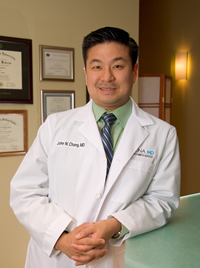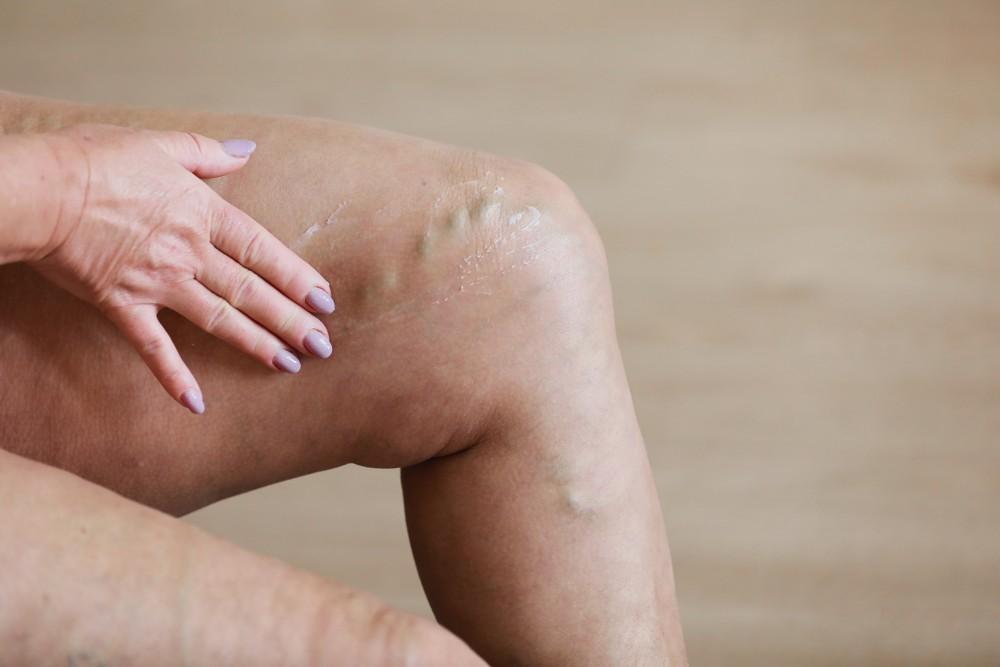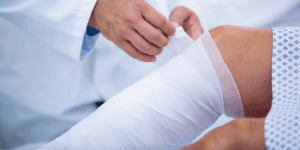| Poor vein health can lead to a variety of symptoms, including visible veins, swelling, pain, and skin changes. Identifying these signs early is key to preventing further complications. Fortunately, treatments like lifestyle changes, compression stockings, sclerotherapy, and laser therapy can help improve circulation and restore vein health. At Miami Vein Institute, we offer personalized care to address your specific needs and help you feel confident and comfortable again. |
Good vein health is essential for overall well-being, yet many of us take it for granted—until we start noticing symptoms. Poor vein health can be more than just a cosmetic concern; it can lead to significant discomfort and even more serious conditions if left untreated. Whether you’ve noticed changes in the appearance of your veins or are experiencing new symptoms, it’s important to recognize the signs of poor vein health early on.
We understand how distressing vein issues can be, and we’re here to help guide you through understanding the problem and finding the right solutions. This blog will walk you through the signs of poor vein health, what might be causing them, and the vein treatment options available to help you feel better, faster.
What Is Poor Vein Health?
Vein health refers to the proper functioning of your veins, which are responsible for carrying blood back to the heart. When veins aren’t working properly, they can become weak or damaged, leading to conditions like varicose veins, spider veins, chronic venous insufficiency (CVI), and even deep vein thrombosis (DVT).
Your veins have one-way valves that prevent blood from flowing backward as it makes its way to the heart. When these valves weaken or fail, blood can pool in the veins, causing them to stretch and become visible on the surface of the skin. This is what leads to conditions such as varicose veins, which can be unsightly and cause discomfort.
Common Signs of Poor Vein Health
There are several signs that your veins may not be functioning properly. While some symptoms may be mild and manageable, others may indicate a more serious issue. Below are the most common signs to look out for:
- Visible Veins
One of the first and most noticeable signs of poor vein health is the appearance of visible veins, particularly on the legs. These veins may be bulging, twisted, or discolored, often appearing as dark blue or purple. The most common condition associated with visible veins is varicose veins, though spider veins are also a possibility.
If you notice veins becoming more prominent, especially on your legs, it may be a sign that your veins are struggling to function properly. - Swelling in the Legs or Feet
Swelling in the legs or feet, especially after standing or sitting for long periods, is another common sign of poor vein health. When blood pools in the veins due to weakened valves, it can cause fluid retention, leading to swelling. This can be uncomfortable and may worsen as the day progresses. - Pain, Heaviness, or Aches in the Legs
Pain, a feeling of heaviness, or aching in the legs is often a sign that your veins are not functioning properly. This is most commonly seen in individuals with varicose veins or those who suffer from chronic venous insufficiency (CVI). The pain can vary from mild discomfort to more intense throbbing, especially after standing or walking for long periods. - Itching or Skin Discoloration
Poor vein health can sometimes cause skin changes, such as itching, dryness, or discoloration around the affected veins. The skin may appear brown or leathery, which is often a sign that blood is not circulating efficiently in that area. Itching or irritation is also common due to the pressure that the blood pooling puts on the surrounding skin. - Leg Cramps and Restlessness
Many people with poor vein health experience restless legs or cramps, particularly at night. This happens because the veins in the legs aren’t efficiently returning blood to the heart, causing discomfort and sometimes muscle spasms. If you wake up frequently with leg cramps or experience a constant urge to move your legs, poor vein health may be to blame. - Ulcers or Open Sores
In severe cases, poor vein health can lead to the development of ulcers or open sores on the legs. This is a serious symptom that indicates chronic venous insufficiency, where the veins are so damaged that they can no longer efficiently transport blood. If left untreated, these ulcers can become infected and lead to more complications.
What Causes Poor Vein Health?
Several factors can contribute to the development of poor vein health. Understanding what may be behind your symptoms can help you take steps to prevent further damage and seek appropriate treatment.
- Genetics
Genetics plays a major role in the health of your veins. If your family members have struggled with varicose veins or other vein conditions, you may be at higher risk of developing similar issues. Inherited factors can weaken the vein walls and valves, making them more susceptible to damage over time. - Aging
As we age, the valves in our veins naturally weaken, and the walls of the veins lose their elasticity. This can make it more difficult for veins to efficiently return blood to the heart, resulting in poor circulation and an increased risk of varicose veins and other vein problems. - Prolonged Standing or Sitting
Jobs or lifestyles that require long periods of standing or sitting can contribute to poor vein health. When you stand or sit for extended periods, blood can pool in the veins, causing pressure to build up and leading to the development of varicose veins or swelling in the legs and feet. - Obesity
Excess weight puts additional pressure on your veins, especially in the lower body. This added strain can cause the veins to weaken and lead to poor circulation. Maintaining a healthy weight is crucial for preventing vein problems and improving overall vein health. - Hormonal Changes
Hormonal fluctuations, such as those during pregnancy, menopause, or with the use of hormonal contraceptives, can weaken vein walls and increase the likelihood of developing varicose veins. Pregnancy, in particular, puts additional pressure on the veins in the pelvis, which can contribute to vein issues.
What Can You Do About Poor Vein Health?
If you notice any of the signs mentioned above, it’s important to take action. Fortunately, there are several treatment options available to help improve your vein health and prevent further complications.
- Lifestyle Changes
The first step in addressing poor vein health is to make lifestyle changes that support healthy circulation. This includes:- Regular exercise: Exercise, particularly walking and leg exercises, can help improve circulation and strengthen the muscles that support your veins.
- Maintain a healthy weight: Losing excess weight reduces the pressure on your veins, helping to prevent further damage.
- Elevate your legs: When sitting or lying down, elevate your legs above heart level to encourage better blood flow.
- Avoid prolonged standing or sitting: If your job requires you to stand or sit for long periods, take regular breaks to move around and stretch your legs.
- Compression Stockings
Compression stockings are designed to apply gentle pressure to the legs, helping to improve circulation and reduce swelling. They are especially helpful for those with varicose veins or chronic venous insufficiency, and they can be worn throughout the day to alleviate symptoms. - Sclerotherapy
Sclerotherapy is a popular treatment for varicose veins, where a special solution is injected into the affected veins. This causes the veins to collapse and fade over time. It’s a non-surgical procedure with minimal downtime and is effective for both varicose and spider veins. - Endovenous Laser Therapy (EVLT)
EVLT is a minimally invasive treatment that uses laser energy to close off damaged veins. The laser energy causes the vein to shrink and collapse, allowing blood to be rerouted to healthier veins. This treatment is highly effective for larger veins and provides long-lasting results. - Surgical Options
In more severe cases, surgery may be required to remove or ligate damaged veins. This is typically only considered when other treatments have been unsuccessful or when the veins are causing significant health risks.
Take the First Step Toward Better Vein Health with Miami Vein Institute
If you’re experiencing symptoms of poor vein health, it’s important to seek professional care as soon as possible. At Miami Vein Institute, we offer a wide range of treatments designed to address your unique needs. Our compassionate team is here to guide you through your options and help you regain your confidence and comfort.
Don’t wait—schedule a consultation today to start your journey toward healthier veins!
Frequently Asked Questions (FAQ)
How can I tell if I have poor vein health?
Signs of poor vein health include visible veins, swelling in the legs, pain or heaviness in the legs, skin changes, and in severe cases, ulcers or open sores.
Can lifestyle changes help with poor vein health?
Yes, lifestyle changes such as regular exercise, maintaining a healthy weight, and avoiding prolonged sitting or standing can significantly improve vein health and reduce symptoms.
Are there non-surgical treatments for poor vein health?
Yes, treatments like sclerotherapy, compression stockings, and endovenous laser therapy can effectively treat varicose veins without surgery.
When should I see a doctor about poor vein health?
If you notice symptoms like swelling, pain, or visible veins, it’s important to seek medical advice. Early intervention can help prevent complications and improve your quality of life.

John W. Dr. Chang, MD, serves as the Partner and Medical Director at Miami Vein Institute, a premier center specializing in vein treatment in South Florida. With a focus on providing high-quality care and ensuring patient safety and satisfaction, Dr. Chang has helped establish Miami Vein Institute as a leading destination for minimally invasive vein treatments. At Miami Vein Institute, Dr. Chang offers a comprehensive range of minimally invasive procedures, including Endovenous Laser Treatments (EVLT) and Sclerotherapy, to address various vein-related concerns. His expertise in both general and cosmetic surgery, combined with specialized training in vein treatments, allows him to tailor treatment plans to meet each patient’s individual needs. Dr. Chang’s commitment to excellence is reflected in his meticulous attention to detail and dedication to staying updated with the latest advancements in vein care technologies. He is certified in a wide array of cosmetic surgery procedures and is a certified trainer for various advanced techniques. Dr. Chang’s affiliations with prestigious medical associations underscore his commitment to upholding the highest standards of medical excellence. With a focus on patient well-being and personalized care, Dr. Chang ensures that every patient receives honest, expert guidance throughout their treatment journey. His passion for providing the best possible care is evident in his commitment to patient satisfaction and achieving optimal outcomes.


